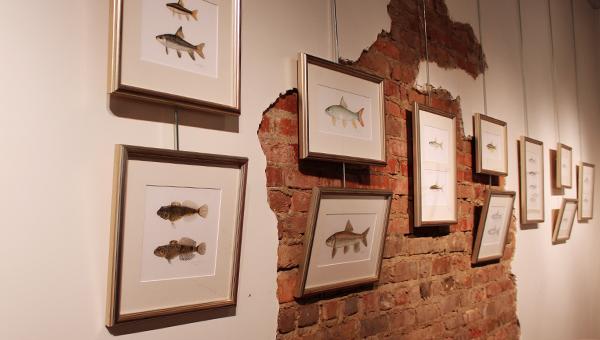“Fishes of Alabama,” an exhibition containing over 50 original illustrations by acclaimed artist Joseph Tomelleri, is being featured at The University of Alabama’s gallery in the Dinah Washington Cultural Arts Center located downtown.
The gallery will present a sample of Tomelleri’s prints from “Fishes of Alabama,” a book published in 2004 that showcased Alabama’s often unknown rich aquatic natural resources.
“Alabama has more freshwater species than any other state in [the lower 48],” he said. “The diversity is just incredible, and unless you’re out in the creeks with nets, very few people actually understand how many species there are.”
Tomelleri has been illustrating fish since 1985 and his work has been displayed in over 1,000 publications, including multiple books and retailers like Outdoor Life and Eddie Bauer. Tomelleri, who studied botany and range management as an undergraduate in Kansas, happened upon the beginnings of his artistic career as a graduate student.
“That’s when some [fellow] students and I did a book about the fish that lived in the creek that ran through campus,” he said. “We wanted to illustrate book with colored pictures, and [after we unsuccessfully] tried to take photographs, I decided to just draw them; I drew as a hobby and I knew I could do that.”
Following this first success, Tomelleri continued his illustrations, and met Herbert T. Boschung at a conference in San Francisco. Boschung is a professor emeritus of biology at the University and the author of the “Audubon Society’s Field Guide to North American Fishes.”
“I met Boschung in 1989 at a fisheries conference where I was doing an exhibit,” Tomelleri said. “He told me he needed an illustrator for an upcoming project. That was how I got attached to ‘Fishes of Alabama,’ and it [became] really the biggest project I’ve done.”
Tomelleri, along with curators of the University’s Ichthyological Collection, took several trips a year for almost five years in total, to net, photograph and preserve the species in order to create the most accurate portrayals possible.
“I wanted to see them alive to see what the colors were, and then [we’d] preserve them so I would have a specimen to look at later,” he said. “We’d load up a Suburban and travel around, and get in that damn red mud that gets on your clothes and doesn’t get out.”
He drew over 200 illustrations with Prismacolor pencils for the project. Just as the distinctive colorations of each fish vary from species to species, so do the hours required to produce each realistic image and he said some drawings take up to 20 hours of work.
Tomelleri’s attention to detail has garnered attention from more than just the artistic community, having provided a resource to the world of science as well.
“I have [Tomelleri’s] ‘Fishes of Alabama’ book on my desk, and it’s a mainstay in my research laboratory,” said Ryan Earley, a biology professor at the University. “His work is absolutely, positively invaluable for the scientific community and has provided a resource that I feel is simply extraordinary in both its accuracy and its aesthetics.”
Earley said, beyond serving a strictly aesthetic purpose, the illustrations offer the opportunity to serve as a visual reminder of the ecological wealth of Alabama’s aquatic ecosystems.
“Tomelleri’s artwork is a perfect fusion of science and art, and promises to impact many more generations of aspiring fish biologists, recreational fishermen, and students of the natural world,” he said. “Simply a tribute to fish, to science, to creativity, it compels us to preserve the beauty within our waters. It’s perhaps the most impactful way to inform the public about, and the need to, conserve dwindling populations of many of the gorgeous, behaviorally dynamic creatures featured in his artwork.”









